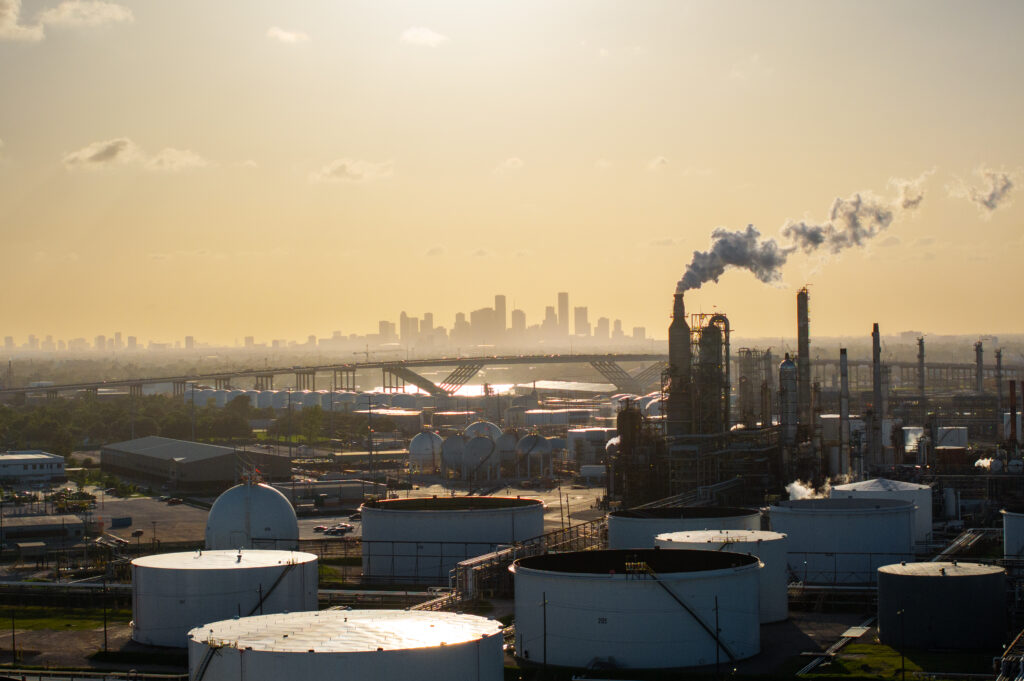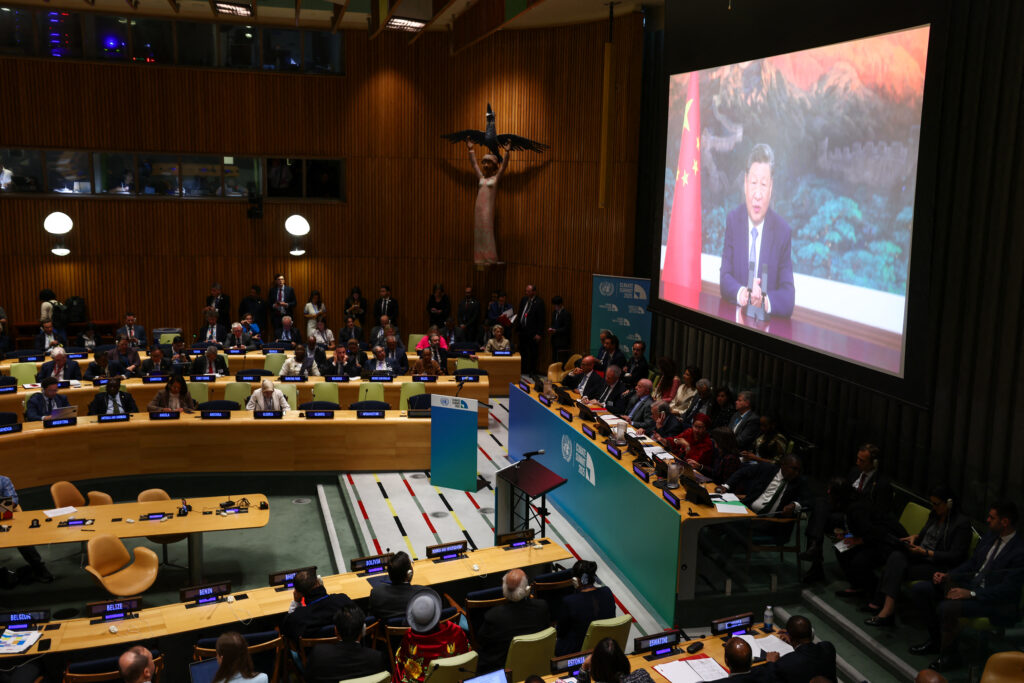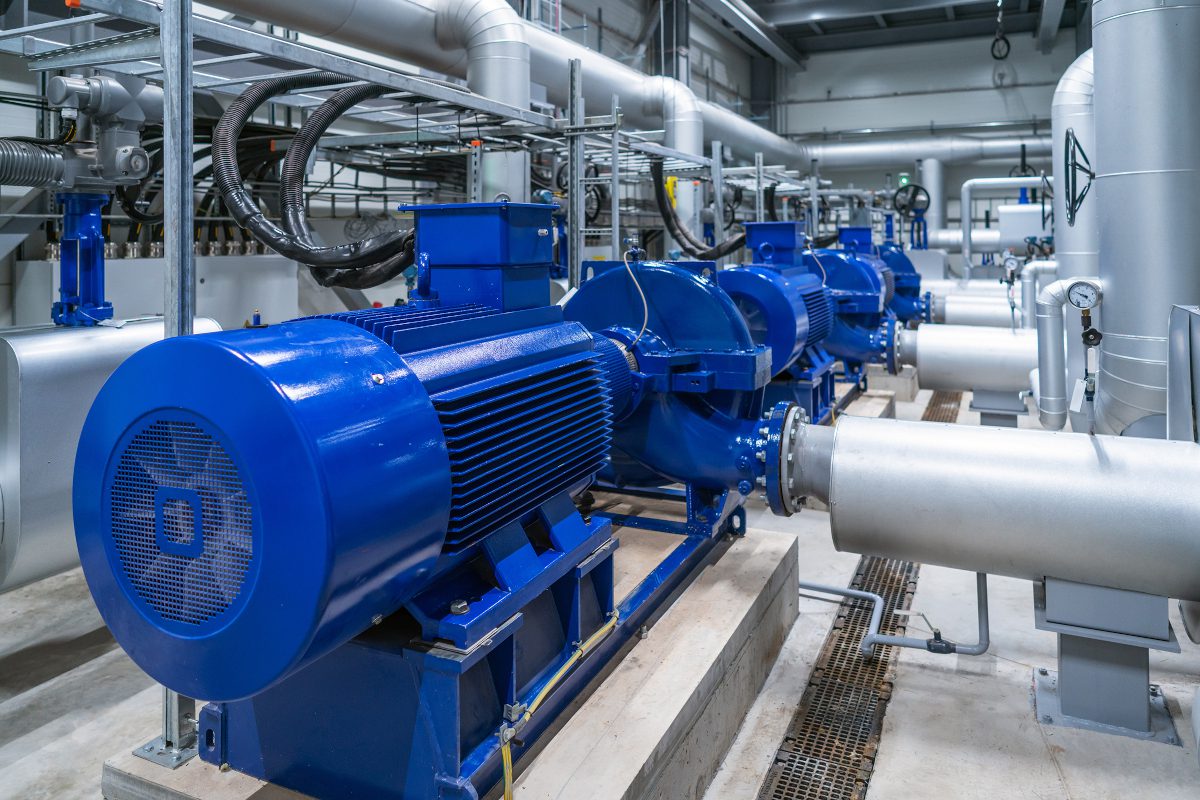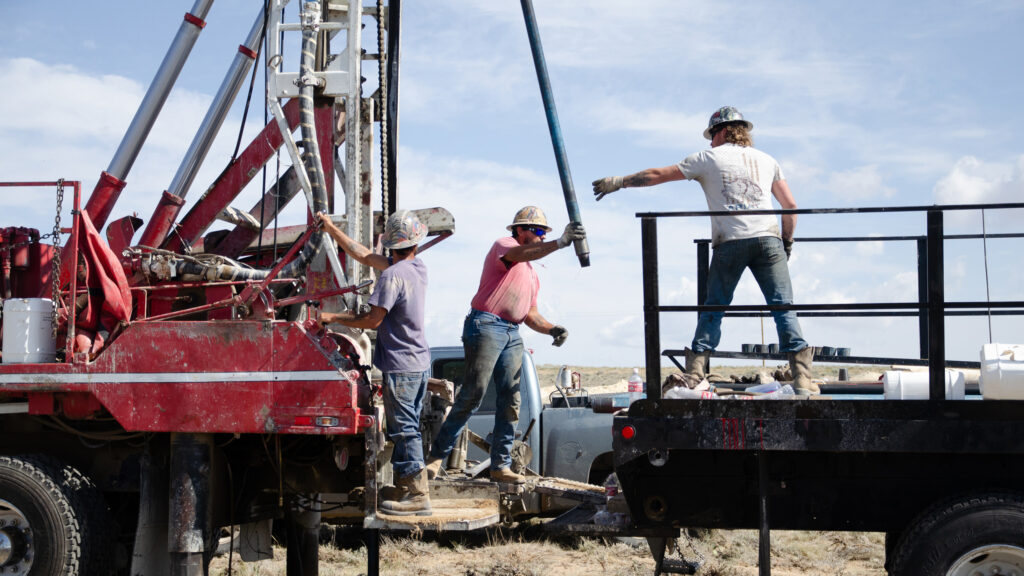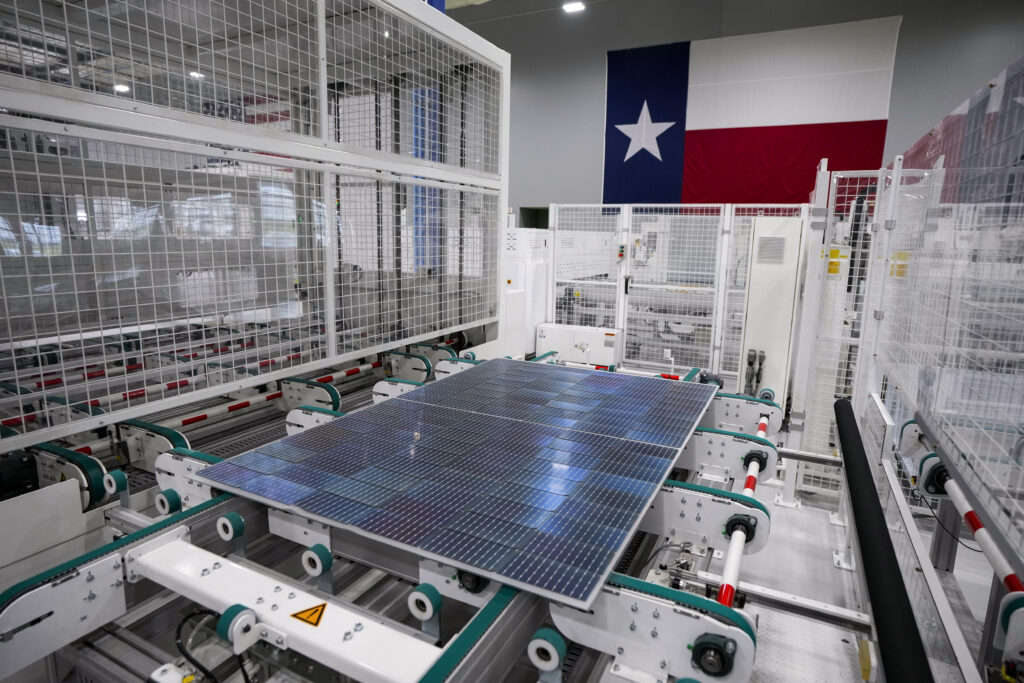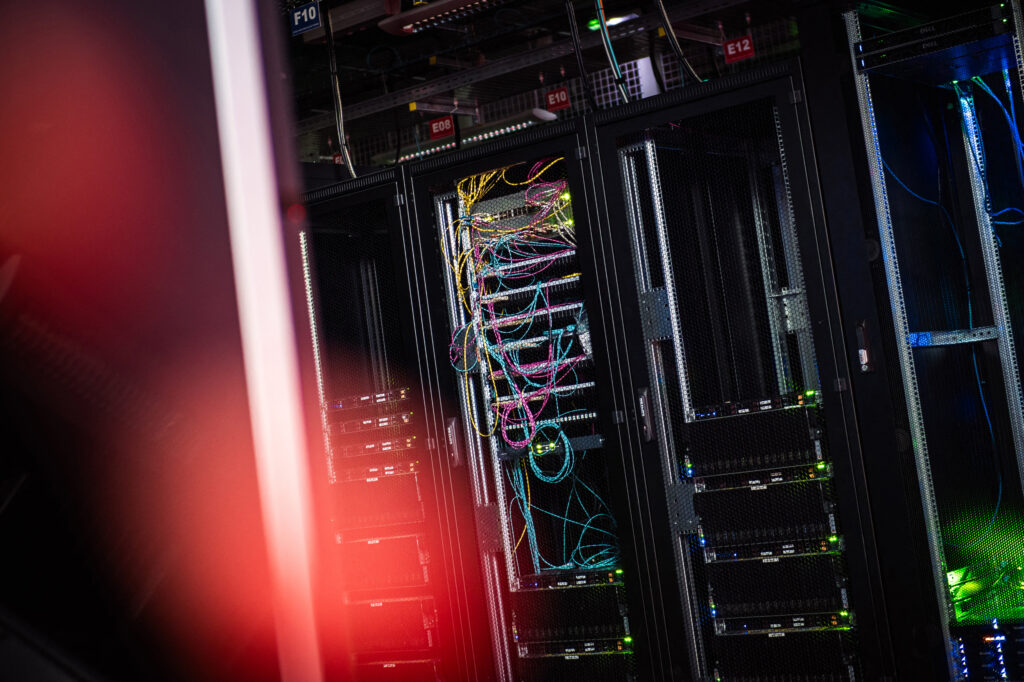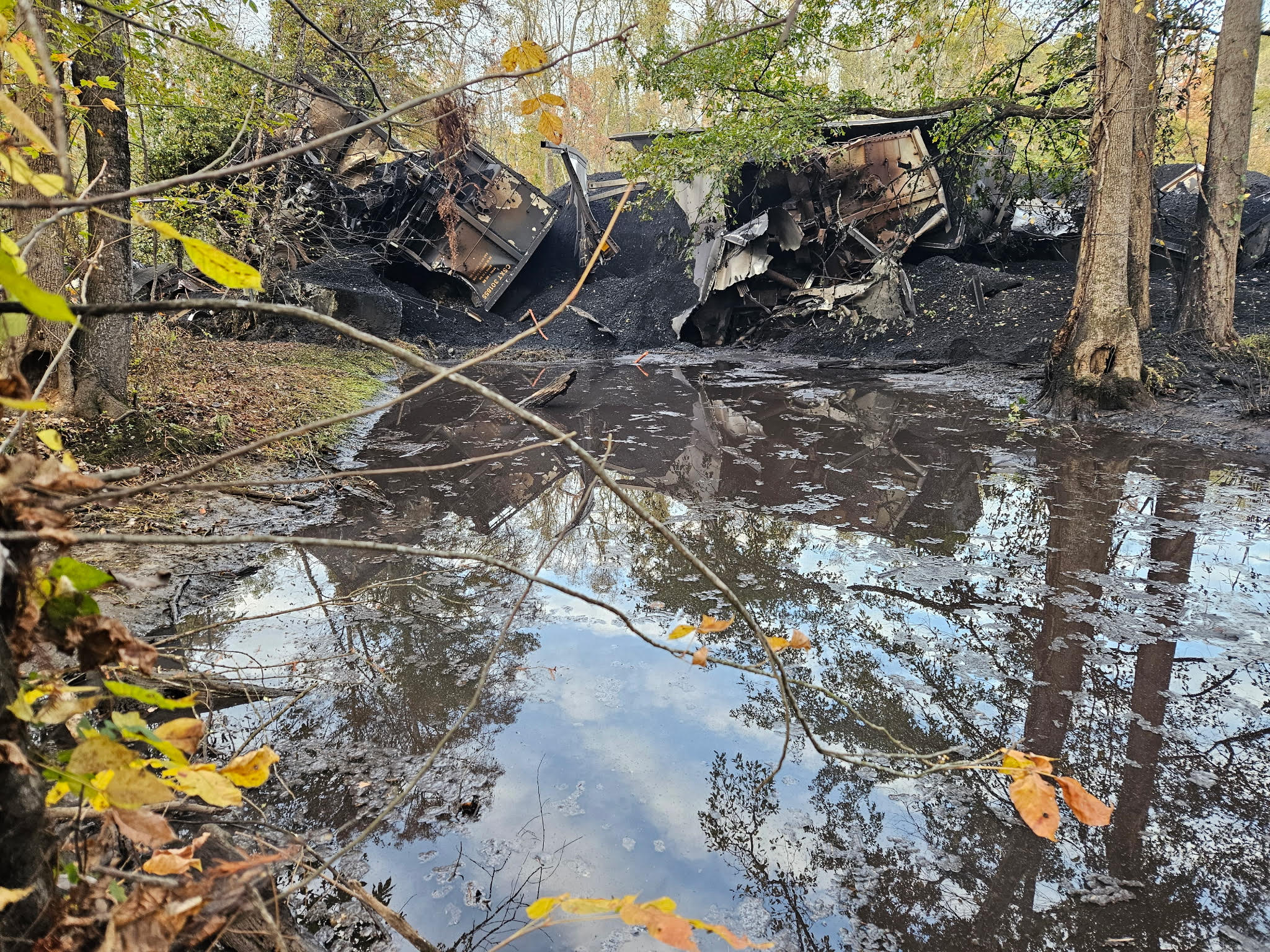In his four years in office, President Joe Biden dedicated more federal attention to climate action than any previous president, breaking a decades-long impasse, and worked to ensure vulnerable people and places benefitted from that action.
He signed the first comprehensive U.S. legislation to address climate change, two bills that together devoted an unprecedented $700 billion to moving the nation toward cleaner energy. A new industry that will manufacture and develop energy technologies of the future is taking shape in plants being built across the country.
He protected more public lands and federal waters than any other president, 674 million acres, declared both the Atlantic and Pacific coasts off-limits to oil and gas drilling and dedicated 10 new national monuments, many of which honor sacred and significant tribal sites.
We’re hiring!
Please take a look at the new openings in our newsroom.
See jobs
And he elevated environmental justice as a policy imperative, directing 40 percent of climate funding to communities overburdened by pollution, retooling the way environmental health impacts are measured and investing, for the first time, in reconnecting neighborhoods that federal highways bisected.
But one other superlative looms over all the climate accomplishments of Biden’s presidency: The United States now produces more oil and gas than any other nation in history, churning out greenhouse gas pollution that has erased the climate gains that otherwise would have been realized as wind and solar energy installations increased. U.S. carbon pollution essentially held steady in 2024, a year that scientists have confirmed was the warmest on record, according to a preliminary accounting by Rhodium Group.
In order to meet its goal, under the Paris Agreement, of cutting greenhouse gas emissions 50 percent by 2030, the U.S. would have to cut its emissions 7.6 percent annually for the next five years. Only in recessions have emissions fallen at that rate.

President-elect Donald Trump has vowed to abandon the Paris Agreement after he takes office this week. Dismissive of the science of climate change, Trump is determined to undo Biden’s policies and pump out even more oil and gas. As a result, climate advocates are viewing Biden’s climate legacy with unease.
“Two things are true,” said Stevie O’Hanlon, spokesman for the youth-led climate advocacy group the Sunrise Movement. “One is that President Biden did more than any other president to tackle the climate crisis and really kick-start development of a renewable energy economy. That is historic and really game-changing. And at the same time, oil and gas production is at record highs, and the policies that Donald Trump is foreshadowing spell out the worst reality for our generation’s future.”
In the end, Biden was not able to build the political consensus to do what the science says is needed: reduce U.S. reliance on fossil fuels.
“Making a Change in People’s Lives”
The Biden administration transformed the nation’s climate, energy and environmental justice picture in ways too diverse and widespread to be captured in a single example. They include:
- A $4 billion electric vehicle battery plant set to open this year in De Soto, Kansas—the largest economic development effort in state history, expected to employ 4,000 workers. The Panasonic Energy project, like hundreds of others nationwide, is relying heavily on tax incentives in Biden’s signature climate legislation, the 2022 Inflation Reduction Act (IRA).
- Purchases of 8,900 zero- or low-emission school buses in 1,300 school districts across the country, funded by the Environmental Protection Agency under the 2021 Infrastructure Investment and Jobs Act. The 10 electric school buses purchased by the Uintah School District in Utah, for example, cut not only carbon emissions but diesel fumes in a region with some of the worst winter ozone pollution in the nation.
- The approval of 10 offshore wind projects—the first of which, South Fork, off the coast of Montauk Point, N.Y., already is delivering energy to homes on Long Island. If the rest are developed, they would deliver enough energy to power 5.25 million homes. There are enough offshore wind proposals In the project pipeline to power 26 million homes.
- In Atlanta, a $157 million federal grant to fund the first phase of The Stitch, a massive project that will create 14 acres of urban greenspace over an interstate highway spur, giving neighborhoods access to downtown. Across the country, the Department of Transportation has awarded $4 billion for 257 projects under the Reconnecting Communities program, designed to end economic isolation for poor and marginalized neighborhoods.
Biden’s allies point to such achievements to show the lasting impact of his presidency.
“The thing that is most durable is making a change in people’s lives or the environment,” said Justin Pidot, co-director of the Environmental Law Program at the University of Arizona College of Law and the former general counsel for the Council on Environmental Quality in the Biden White House. “That’s true whether you’re setting up a new program that can provide funding for someone to buy an EV, or to build additional renewable energy, or to provide fenceline monitoring so that communities have a better understanding of their air quality.”


Activists have fought for decades to get federal environmental officials to recognize the disproportionate burden of pollution that poor and minority communities face. But they said they saw little real progress beyond President Bill Clinton’s executive order on environmental justice 30 years ago, which directed federal agencies to identify and address the disproportionate health or environmental effects of their actions on minority and low-income populations.
“We had administration after administration who talked about their care and concern for our most vulnerable communities, but not enough substantive actions to move the needle,” said activist Mustafa Ali, who spent 24 years at the EPA, including as a top environmental justice adviser. “With the Biden administration, we finally saw words, actions and resources coming together. When people take a look back, they will see that folks not only had a seat at the table, but they also had the ability to influence policy to help communities be safer.”
Under its Justice 40 initiative, the Biden administration sought to direct 40 percent of its climate and clean energy funding to historically underserved communities and developed a screening tool to identify which neighborhoods would qualify. Decision-making in every federal agency reflected a new elevation of environmental justice, whether it was the Federal Environmental Regulatory Commission denying a permit for a hydropower project that threatened sacred Navajo waters in Arizona or a Department of Justice civil rights case that brought effective wastewater treatment services to rural Black communities in Alabama.
“With the Biden administration, we finally saw words, actions and resources coming together.”
— Mustafa Ali, former EPA environmental justice adviser
Vernice Miller-Travis, executive vice president of the nonprofit Metropolitan Group, believes that despite proposals, like those in the right-wing roadmap Project 2025, to eliminate environmental justice initiatives, the way federal agencies operate has been permanently changed.
“It’s not going to be easy to do away with it because of the way that [the Biden administration] thought about structural and systematic inclusion of this work in the missions of all the federal agencies,” she said. Environmental justice was integrated into decision-making and how federal officials set priorities. The Trump administration, she said “might try to unwind it, but I don’t think we’re ever going back to a place of insignificance or a minor issue, which is certainly how we felt in many administrations.”
A Legacy Still Being Built
Much of the environmental legacy that the Biden administration hoped to leave behind is still under construction. The incoming Trump administration and its allies in the Republican-led Congress have vowed to repeal the IRA, the law that catalyzed the surge in investment in a transition away from fossil fuel-derived energy.
There are more than 350 solar, wind, EV and battery projects in varying stages of progress that have been announced since passage of the IRA, adding up to $131.8 billion in investment and expected to create more than 115,000 jobs, according to tracking by the nonprofit group Environmental Entrepreneurs, or E2.
“We are at the advent of the biggest economic revolution we’ve seen in America in generations, and it’s because we finally decided to do something about climate change in this country,” said Bob Keefe, E2’s executive director. ”It’s because of President Biden’s leadership. The important thing to remember is we didn’t have any of that happening before four years ago.”


A survey of 930 clean energy business executives E2 commissioned last year found that 85 percent of respondents said the IRA was important to their business growth. More than half said they would lose business or revenue if the IRA were repealed and more than 20 percent said that they would have to lay off workers if that happened.
The clean energy incentives in the IRA, mainly tax breaks, are vulnerable not only because of Republican ideological opposition to government subsidies for wind, solar and EVs. They also will be a tempting place for Congress to find spending cuts to pay for the big tax cut package Trump wants lawmakers to pass in the coming weeks.
But Ali Zaidi, Biden’s national climate adviser, maintains it will not be easy for Republicans to excise portions of the Biden climate policy without killing the parts they’d like to preserve. Nearly 60 percent of the announced projects, 85 percent of the investments and 68 percent of the jobs linked to the IRA are in Republican congressional districts, E2’s data shows.
In some cases, the connections between Biden policies and the job creation are direct—the $7,500 consumer tax credit for purchases of new electric vehicles help make the business case for EV and battery manufacturing plants. But Zaidi points to less obvious connections: Hundreds of workers in Louisiana, for example, are employed in shipbuilding because of the anticipated demand for large new specialized vessels needed to service offshore wind projects.
“There’s interconnectivity between these various incentives,” Zaidi said in a recent talk at the University of Pennsylvania on Biden’s accomplishments. “If you repeal the [energy] tax credit, what does that do to the domestic demand, and how does that destabilize all of this investment that’s built to feed that demand?
“I’m betting on the momentum that American industry and American workers have at their back right now,” Zaidi said.
But there are important elements of Biden’s climate policy that Trump can eliminate without Congress’ help. For example, Trump’s EPA could roll back the vehicle tailpipe pollution standards that the Biden administration approved last spring that were meant to cut carbon emissions from new passenger vehicles by more than half by 2032 and encourage a transition to battery-driven vehicles. Trump campaigned on a promise to eliminate what he derided as an “EV mandate.”
The United Kingdom-based research firm Rho Motion projected last year that EV battery demand in 2040 would be 40 percent lower if Trump were re-elected to the presidency and Republicans won Congress—primarily because of the potentially large impact of eliminating the tailpipe pollution standards. The Biden administration’s clean energy transition would still be alive under such a trajectory, but not at anywhere near the rate to drive carbon emissions to net zero by mid-century, as science says is needed to avoid the worst impacts of climate change.


Companies that have invested in the U.S. clean energy transition in the United States during the Biden administration are not yet pushing the panic button in anticipation of a Trump rollback of incentives or regulations. Instead, they are adjusting. Some of those adjustments will mean higher carbon emissions.
“It’s no secret that federal incentives support building EVs and batteries in the U.S., which leads to lower prices for consumers who want to purchase American-made vehicles,” said a spokesman for Scout Motors, which broke ground last year on a $2 billion EV plant in South Carolina. “With that said, let’s be clear: The long-term success of Scout Motors is not dependent on incentives—it’s dependent on building an outstanding product that consumers want.”
Late last year, just before the election, Scout’s parent company, Volkswagen, told investors it had decided to offer a gasoline range-extender as an option on its new Scouts; in effect, adding a hybrid option to what had been its plans for an all-electric revival of the rugged SUV brand. “We are convinced that the future is electric,” said Arno Antlitz, Volkswagen’s chief operating officer. “But the transition to electric mobility in the U.S. is not as fast as originally assumed.”
Faith in a Win-Win Approach
The Biden administration is not conceding to a slowing clean energy transition as it leaves office. Its officials have maintained that state and local governments can make up for any slowdown under Trump, and the White House even left behind a new U.S. target under the next stage of the Paris Agreement: to cut carbon emissions as much as 66 percent by 2035. “We are the United States of America,” Biden said when he made the announcement. “There is nothing beyond our capacity if we work together.”
But as Biden leaves office, the neighborhoods destroyed by fire in Los Angeles and the thousands still homeless after North Carolina’s unprecedented mountain floods are testament to his administration’s unfinished work.
“Right now, the existential threat of climate change has never been clearer,” Biden said in his farewell address last week.
“Powerful forces want to wield their unchecked influence to eliminate the steps we’ve taken to tackle the climate crisis, to serve their own interests for power and profit,” he warned. “We must not be bullied into sacrificing the future, the future of our children and our grandchildren. We must keep pushing forward, and push faster.”


Despite those declarations, Biden never embraced economists’ idea of putting a price on carbon—essentially, a tax on polluters—to reduce dependence on fossil fuels. Nor did he agree with progressive activists who wanted to ban fracking and otherwise shut off production of fossil fuels; instead, he took flak for approving a number of drilling projects during his tenure, most notably ConocoPhillips’ huge Willow oil project in the Alaskan tundra. But Biden put his faith in a win-win approach to cutting carbon emissions—investment in clean energy to generate jobs and reduce demand for fossil fuels. The administration thought a 50 percent cut by 2030 was achievable.
“The focus was on ‘How do you make the clean energy transition happen?,’” said Pidot, Biden’s former CEQ counsel. “You make it happen by creating the right kind of financial assistance so that the uneven playing field that has favored the fossil fuel economy begins to shift.”
The latest greenhouse gas emissions data show, however, that the shift isn’t happening quickly enough, not when technology is driving electricity use higher and fracking has seemingly erased the limits on the nation’s ability to produce oil and gas. The transition also was not happening fast enough to convince enough voters that they would benefit economically.
Lena Moffitt, executive director of Evergreen Action, an advocacy group that helped lead the difficult fight in Congress for passage of the IRA, said that if the law were being rewritten today, she’d like to see it include some immediate benefit for consumers. “I would absolutely include a dividend check that folks would get in the first six weeks, with Joe Biden’s name on it, saying this is the down payment on the hundreds of billions of dollars that you’re going to see flow to communities across the country over the next 10 years,” she said.
Moffitt remains convinced that investments and industrial policy that Biden put into place to address climate were a package powerful enough to address the economic dislocation that Americans are feeling while curbing the nation’s carbon emissions.
“We needed more time with it,” Moffitt said.
About This Story
Perhaps you noticed: This story, like all the news we publish, is free to read. That’s because Inside Climate News is a 501c3 nonprofit organization. We do not charge a subscription fee, lock our news behind a paywall, or clutter our website with ads. We make our news on climate and the environment freely available to you and anyone who wants it.
That’s not all. We also share our news for free with scores of other media organizations around the country. Many of them can’t afford to do environmental journalism of their own. We’ve built bureaus from coast to coast to report local stories, collaborate with local newsrooms and co-publish articles so that this vital work is shared as widely as possible.
Two of us launched ICN in 2007. Six years later we earned a Pulitzer Prize for National Reporting, and now we run the oldest and largest dedicated climate newsroom in the nation. We tell the story in all its complexity. We hold polluters accountable. We expose environmental injustice. We debunk misinformation. We scrutinize solutions and inspire action.
Donations from readers like you fund every aspect of what we do. If you don’t already, will you support our ongoing work, our reporting on the biggest crisis facing our planet, and help us reach even more readers in more places?
Please take a moment to make a tax-deductible donation. Every one of them makes a difference.
Thank you,





